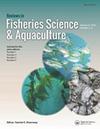Traceability Issues in the Trade of Marine Ornamental Species
引用次数: 48
Abstract
In the last decade, the trade of marine ornamental species has experienced a significant expansion worldwide; however, this industry still relies on a large number of unsustainable practices (e.g., cyanide fishing, overexploitation of target species) and needs to shift its operations urgently to avoid collapsing. Under this scenario, traceability and certification emerge as important management tools that may help this industry to shift toward sustainability. This industry relies on the trade of thousands of small-sized species that are traded live on a unitary basis with high market value. These features, along with a fragmented and complex supply chain, make the traceability of marine ornamental species a challenging task. This study presents the most commonly used methods to trace aquatic organisms and discusses their suitability to trace marine ornamental species. The use of bacterial fingerprints appears to be the most promising method to successfully trace marine ornamentals, but it is most likely that a combination of two or more traceability methods need to be implemented to cover all the unique features displayed by the live trade of marine ornamental species.海洋观赏物种贸易中的可追溯性问题
在过去的十年中,海洋观赏物种的贸易在世界范围内经历了显著的扩张;然而,该行业仍然依赖于大量不可持续的做法(例如,氰化物捕捞,过度开发目标物种),需要紧急改变其业务,以避免崩溃。在这种情况下,可追溯性和认证作为重要的管理工具出现,可以帮助该行业转向可持续性。该行业依赖于成千上万的小型品种的贸易,这些品种在单一的基础上进行交易,具有很高的市场价值。这些特点,以及分散和复杂的供应链,使海洋观赏物种的可追溯性成为一项具有挑战性的任务。本文介绍了最常用的水生生物追踪方法,并讨论了这些方法在海洋观赏物种追踪中的适用性。细菌指纹是目前最有希望成功追踪海洋观赏植物的方法,但很可能需要两种或两种以上的方法相结合,以覆盖海洋观赏植物活体贸易所显示的所有独特特征。
本文章由计算机程序翻译,如有差异,请以英文原文为准。
求助全文
约1分钟内获得全文
求助全文

 求助内容:
求助内容: 应助结果提醒方式:
应助结果提醒方式:


